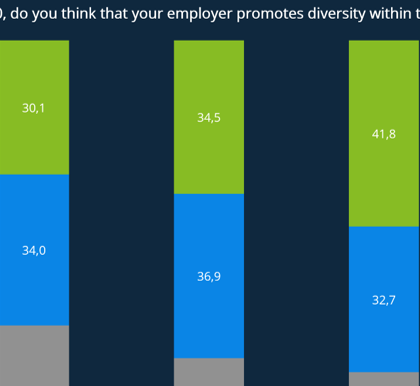It is no secret that women are underrepresented in leadership positions in nearly all companies around the world. Although society has seen more and more women climbing higher up on the corporate ladder in recent decades, traditional gender role ideas still have an overwhelming influence on women in the work force today. This gender disparity is echoed in a recent project conducted by Statista that ranked the World’s Top Female-Friendly Companies. For one aspect of the ranking, data was collected on the number of women on the executive level and the number of women on the board of directors in companies operating in multiple countries. Unsurprisingly, women still only hold an average of 25.01% of these positions among the companies considered for the ranking, and, furthermore, only 4.97% of these companies are led by a woman CEO.
If women are struggling for promotions on a global level, should companies implement a quota requiring a minimum representation of women in leadership positions? After all, the countries with the largest representation of women in leading positions are those who have already implemented quotas, for example Norway (37%) and France (33%). It would be interesting to know what women really think about quotas on a corporate level. To gain more insight on this topic, the following question was posed in 40 different countries to women respondents: “Do you think that companies should implement a quota for women in management positions (i.e., should women make up a minimum percentage of management positions)?” Around the world, 46% answered “yes” in favor of a minimum quota. This number is slightly lower among respondents in the United States (39. Globally, only 20% answered “no” to implementing a quota, while 27% are unsure and answered “maybe” – the general pattern suggests that most women are not opposed to a gender quota (see Figure 1 for all responses). Countries with women most in favor of a gender quota (i.e., answered “yes”) are South Africa (73%), France (57%), and Italy (57%), while those strongly against (i.e., answered “no”) are Russia (47%), Mexico (31%) and Australia (30%).
While the aim of a quota is to improve gender equality and narrow the gender gap at the top of the corporate ladder, women still fall significantly behind in countries that have already implemented a quota in the last decade. This implies that we should perhaps not solely rely on gender quotas to improve gender equality and gender discrimination, and our findings indicate that even those who would ostensibly stand to benefit from such measures (women), are not completely on board with a gender quota. Instead, more research is needed to understand why women are still underrepresented in leadership positions and what changes we can make to improve women’s opportunities in the work force.
“Is it even a problem that women are not equally represented in leading positions?” “Why won’t this topic go away?” These are some of the questions women asked after completing a survey to rank the World’s Top Female-Friendly Companies. Apart from disparities due to historically rooted gender norms and gender discrimination, high-level representation improves workplace policies that benefits everyone and offers increased opportunities for mentorship among women on all levels. Role-models matter; companies with women in leading positions provide role models that women desperately need to advance their careers, and they bring necessary changes to the working environment that benefits all genders.

Figure 1. Percentage of women who answered “yes” to the question “Do you think that companies should implement a quota for women in management positions (i.e., should women make up a minimum percentage of management positions)?” around the world (global average = 46%).









